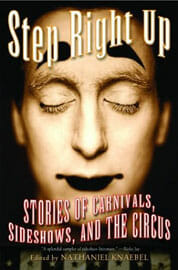Step Right Up: Stories of Carnivals, Sideshows…

Step Right Up fills some kind of niche: Somewhere there must be a slot left in the canon (perhaps just to the left of a collection of odes to goldfish) for an anthology of circus-related vignettes. Hell, we have nearly everything else! Publishing an anthology involves finding and elucidating common threads among disparate texts; here, apart from the circus theme, the unifying motif seems to be that we like to inflict our gaze on others if we can—view their weaknesses and aberrations—without being seen ourselves.
-

-

-

-

-

-

-

-

-

-

-

-

-

-

-

-

-

-

-

-

-

-

-

-

-

-

-

-

-

-

-

-

-

-

-

-

-

-

-

-








































